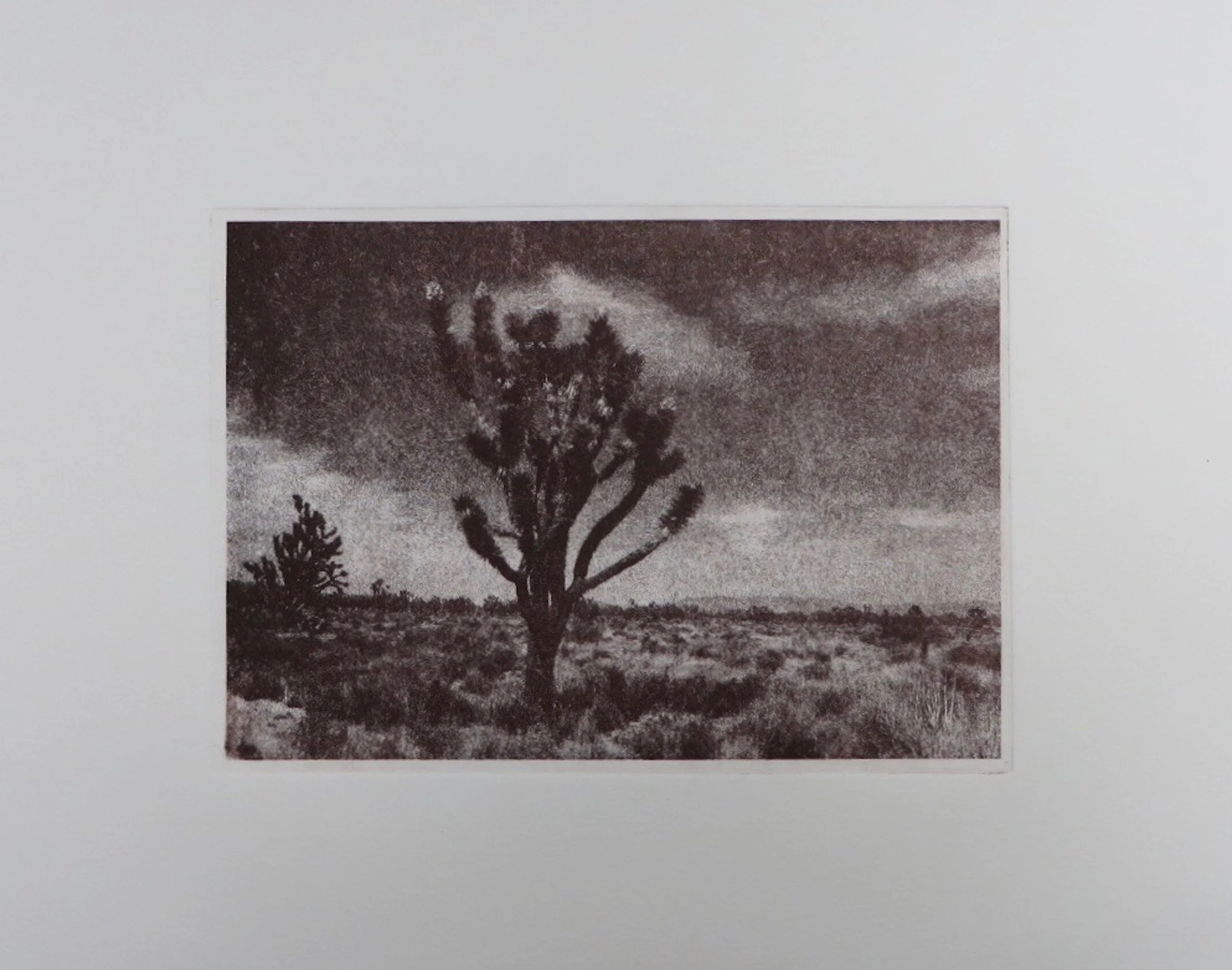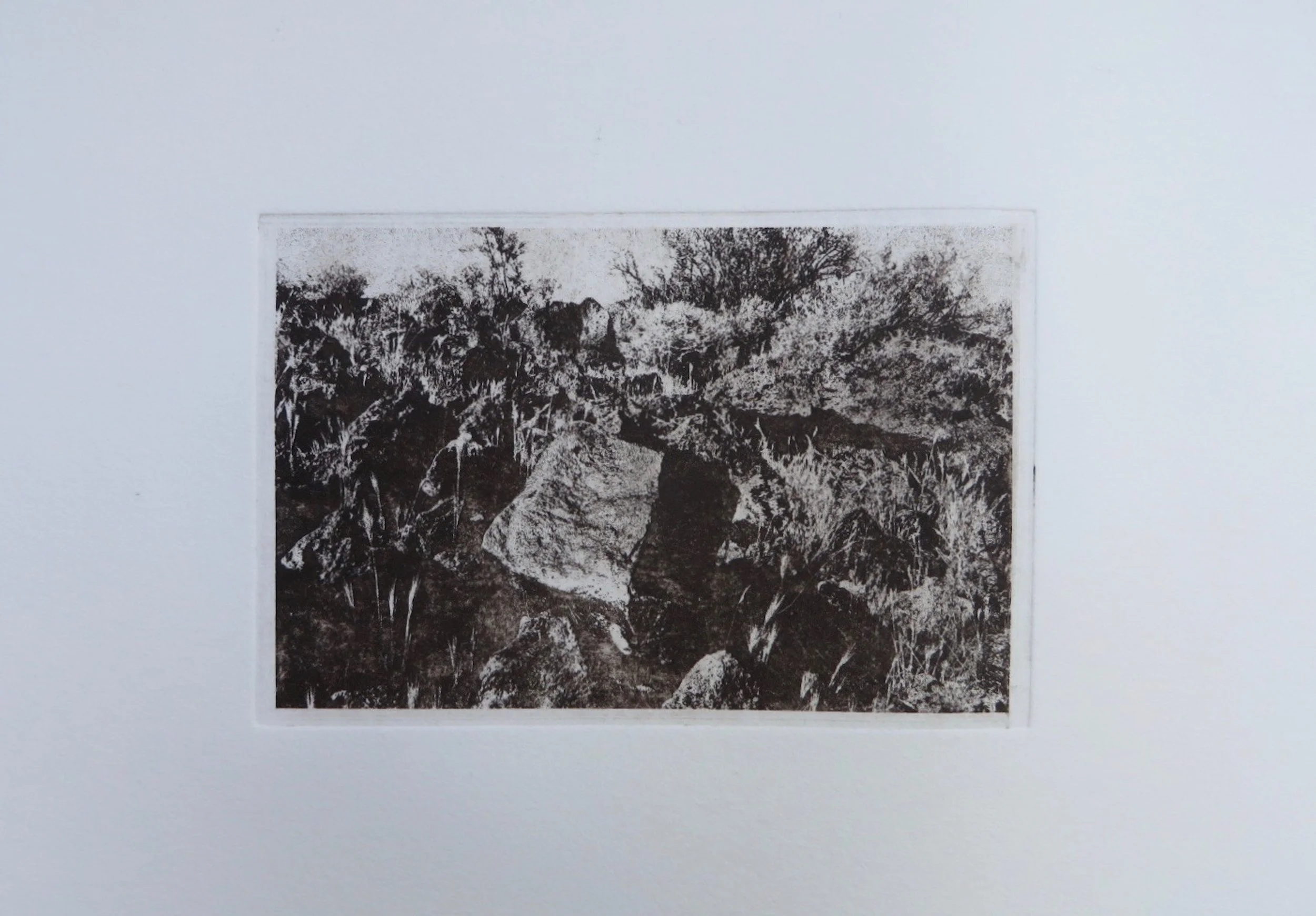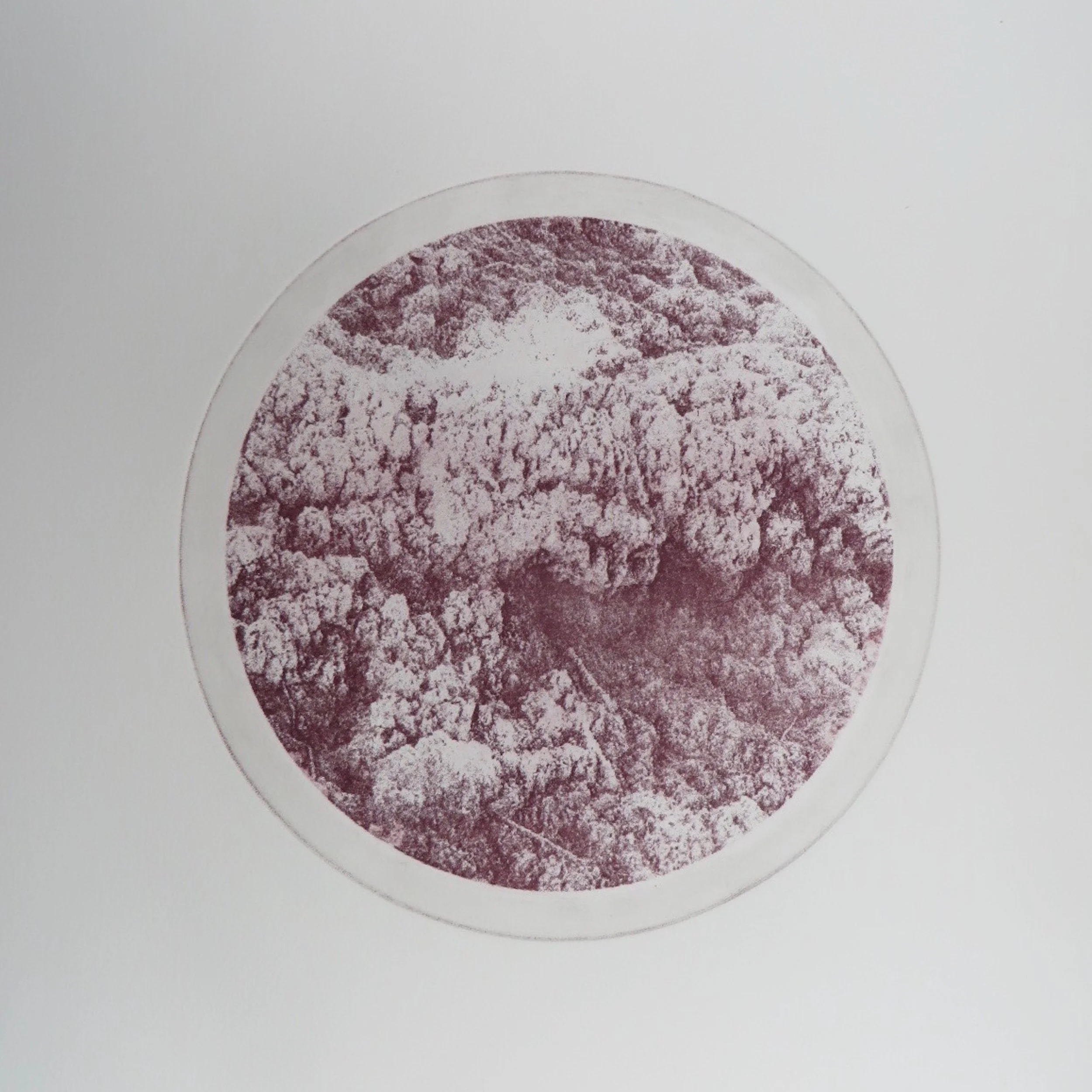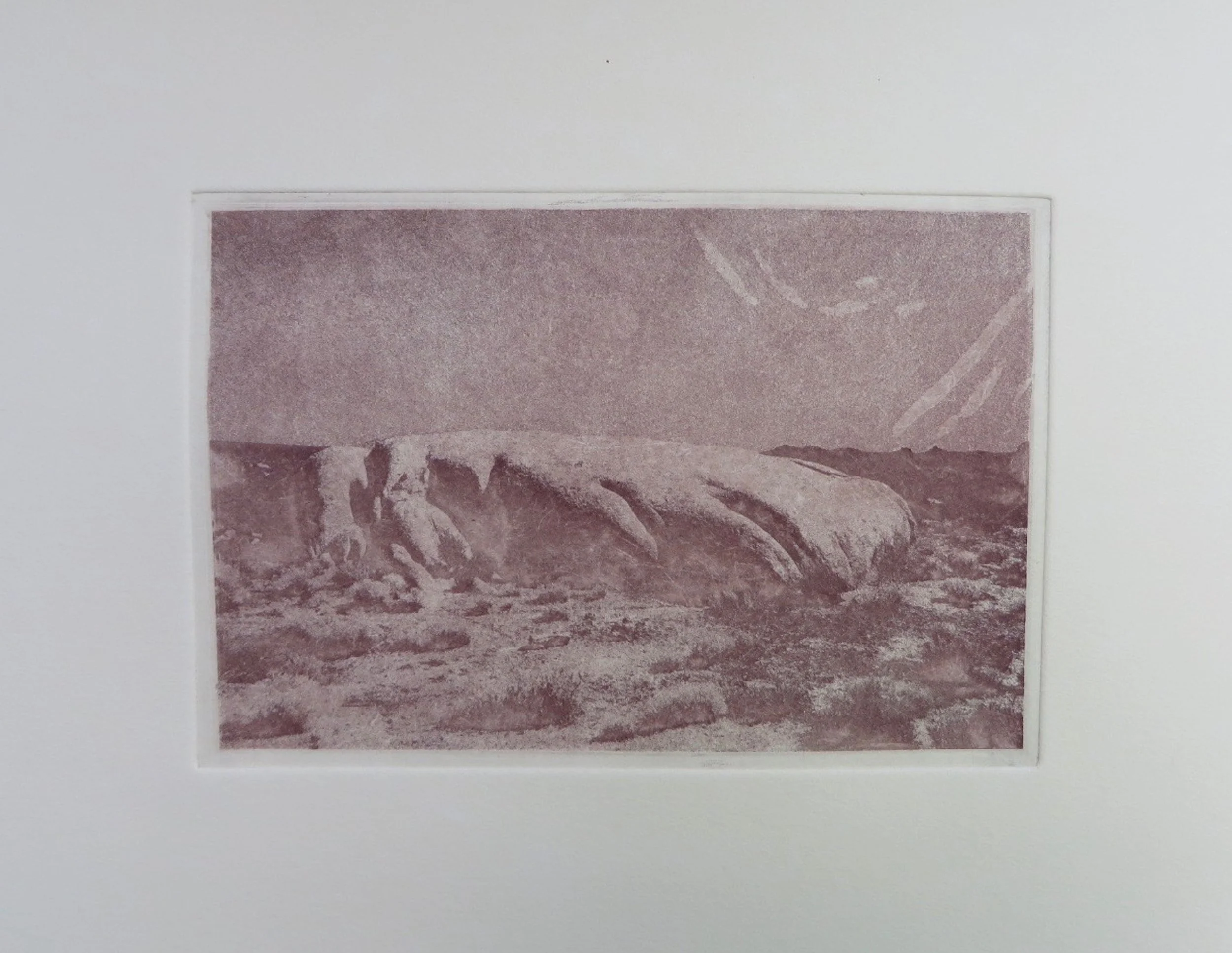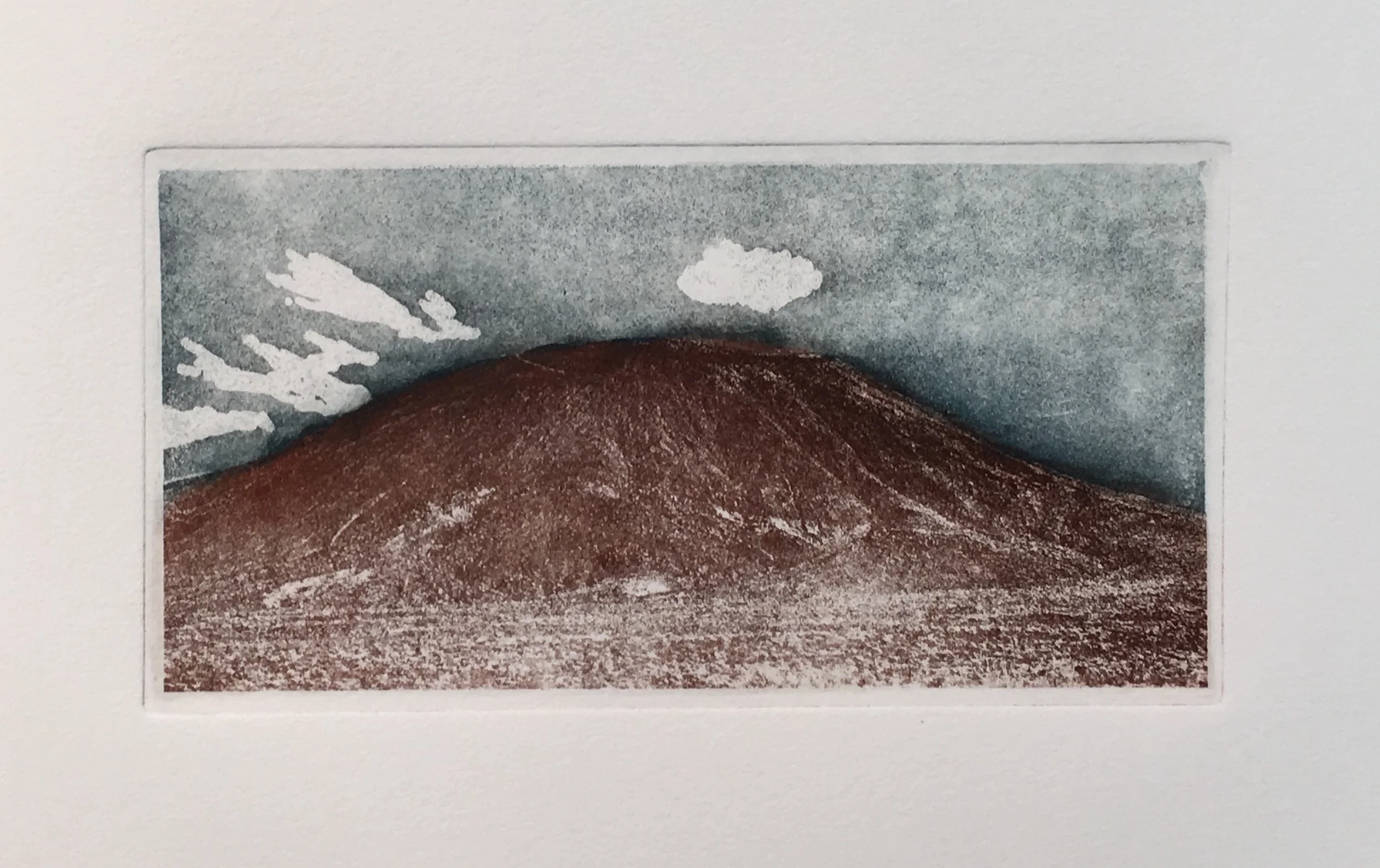
TRACING THE FORMER WORLD
Desert Light Gallery, Mojave National Preserve
Before I visited the Mojave National Preserve, I was fortunate to have been exposed to years of research in this area from my studies in geology and sedimentology. My work is informed by science: how understanding the rocks, features in the environment, and our surroundings will help us make sense of the past, and by consequence, ourselves. I knew that my experiments here would be with the idea of time and a focus on how that pertains to the desert environment.
After my arrival at the Preserve, I decided that my printmaking background coupled with the use of the camera should direct my work for this residency. It would give me the opportunity to make multiples, and as such, let time manifest itself in a tangible way. Because my work is guided by my interest in memory and history, the idea of framing my interactions through the lens of the camera helped me to literally “capture” a moment in time. In addition, the process I chose to make my work, photogravure, is a very time-consuming and laborious effort that I feel reflects the conceptual integration I created, from my work to the formations and sites I witnessed in the Mojave. To interact with my emotional connection to the landscape, I altered the images as I worked, creating poetic remarks on the plate, or enhancing the way the feeling of the place is portrayed through my use of color or size. The study of the geology of the Mojave and its many amazing features has opened my eyes to the possibilities of multiple histories, experiences, and glimpses of what it means to navigate time and understand the past. Tracing the Former World is my way of looking at what came before me, and connecting to it with sensitivity and analytic perseverance.
The Mojave National Preserve is a vast and particularly special set of circumstances that allows us to explore not only many former worlds, but future models of the environment, in the present tense. The storytelling of the people who have lived here, the volcanoes that have erupted here, and the sands of time that blow through here all contribute to a fascinating and eternally important place in the world of both science and art. The images in my exhibition seek to tell part of that story.
Nicole Geary, 2017
I hiked through a ways on a trail in the preserve and stumbled upon this rock. It just felt like it was special and needed to to be honored in a print. It has a wonderful presence about it, and I’m sure many before me have admired its size, uniqueness, and character. The print is made to reflect its special place in the preserve, standing alone and looking like it’s on its own journey.
Boulder Brilliance
The image on the right was an idea I had after visiting the Kelso Dunes, seen in the image above. I wanted to produce the affect of visiting the dunes at night, when critters come out and the winds reset the patterns across the sand. The moon leaves an impression on the bright white of the ancient sand, and the cool desert air allows you to feel like you can be a part of the landscape for a long period of time..
Night Dune Field
One of the most iconic figures of the desert in Southern California is the Joshua tree. In the spring I was there, fields of them stood tall and clumped together, like groups of friends. This image comes from a spot where I found a lonely tree, looking as though it wandered out away from the crowd. I stopped to rest near it and took a long time to observe this tree. I often wonder about it as I look back on it’s picture even now.
In the Joshua Trees
Mojave Road is not so much a road as it is a well worn path that has been used for years by the Mohave to cross the desert. It can be difficult to pass in areas. At a point of crossing the preserve, I stopped to look at hundreds of yards of ancient lava flow. This image comes from the rough rocks along that trail, through a part of the preserve that needs 4WD to continue along the road.
Basalt at Mojave Road
Many of the images I created for Tracing the Former World have an immediate recognition to them, but one of my favorite of the group is Soda Lake. The evaporites on the lake create wondrous formations as the lake bed dries out, making a strange, abstract image when seen close-up. In keeping with the color palette of the other prints, this brownish purple made me think about its other-worldliness, and the way the lake became a familiar character as I trekked around the preserve, coming back by it every evening.
Soda Lake
This rock was reached by a long hike on a clear day. It looked as if it has been poured onto the desert floor, and the shapes and bends in it resemble something like a body. I don’t remember why it stuck out to me at the time, but I could not really get over how massive it seemed. When looking at my pictures back in Texas, and trying to see if it fit with the others, it felt as though it always had.
Elephant Rock
This image is taken from a solid wall of rock layers, that bend and roll upon themselves. They are actually quite bright white in reality, and in this image I’ve tried to darken the values and play with the detail within the rock face to bring out its surface qualities. The drawings on the side of the paper are taken from local pictographs that have been on the rock surfaces for ages, but are here reproduced by my hand in ink.
Meaning in the Rocks
Taken from the landscape at the Cima Domes, this area was in full bloom in the spring. The picture I had in my mind was that when you are seeing these extinct volcanoes, you are seeing a picture of the world how it looked before your time. When you walk down the path of the ancient lava flow, you get a glimpse of what happened millions of years before you lived. Because the desert has a lot lower erosion rates than places with water, you have a chance to see the picture longer before it fades. The exhibition is named for this piece and this place.


